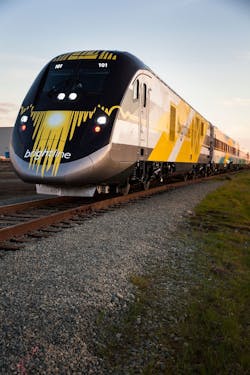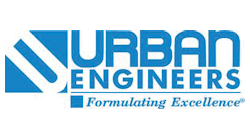Transit-oriented developments have been gaining momentum over the past five years as a desire for city life has intensified. As a result, more cities are emphasizing development around both existing and new rail stations. A combination of public policy and private investment is helping to transform these stations into hubs of their communities.
“We’re seeing this all around the country now,” said John Holak Jr., vice president and general manager of rail and transit at Urban Engineers. “Some very historic but dilapidated train stations are being reborn. Millennials want to come back to these core cities. Many aren’t interested in owning their own vehicle as a primary source of transportation.”
Leveraging a passenger rail line to help drive economic activity is the primary motivation for both government officials and private investors. This has been the case for more than 20 years when light rail systems were first being constructed.
“Wherever a station popped up, little shops popped up,” said Daren Petroski, vice president of rail and transit at Burns Engineering. “As these areas are developed, there is a vibrancy brought back to these cities. That is why you’re starting to see money pour into these facelifts.”
Tushar Advani, managing principal of transportation facilities-West for WSP USA, said the big difference today is that engineers are designing for TOD rather than just letting it happen organically. It is common to see retail shops, restaurants, hotels, condos, apartments and office buildings all being integrated into these developments.
Green space has also become a popular amenity. “In some instances, as we’ve seen in New York and Philadelphia, train sheds have been sitting defunct for years,” Holak said. “Some of these archaic, elevated rail lines are being turned into beautiful parks with grass and trees and running water.”
A combination of funding sources is helping to turn many of these TOD concepts into reality.
“For many years, a lot of the legacy rail operations were starved of funding,” Petroski said. “There wasn’t enough capital investment to keep them in a state of good repair. Seeing the benefit of public transit has spurred increased public funding, generally speaking. Initiatives like TIGER and TEA grants really allowed these economy-stimulating TOD investments to get moving.”
The has also been money flowing in from the private sector. “Private developers and investors are seeing this opportunity to encourage people to move into these areas where right below them sits a footprint of transportation that makes their lives much easier,” Holak said.
From facelifts and extensions to brand new systems
A lot of TOD activity is still in the early design phase. That said, there is a long list of completed projects to help one get an idea of what’s possible.
“Grand Central Terminal in New York City is now a place people want to go who aren’t even taking the train,” Petroski said. Shops line the terminal and several office-focused TODs have sprouted up. “The World Trade Center PATH station in New York has turned into a glamorous mall,” Petroski continued. “And what they’ve done with Denver Union Station over the past six years has been amazing.”
Completely new rail lines are also being constructed with heavy TOD components. One example is the Brightline project in Florida, an intercity high-speed rail system running from Miami to Orlando. The project is being completed in two phases, the first being a 68-mile stretch from Miami to West Palm Beach. That phase includes 450,000 square feet of rail station and retail space. “Brightline is a 100 percent privately funded project we’ve been involved with for the past few years,” Holak said. “In Miami, the developer is doing four overbuilds (skyscrapers) right at the footprint of the station.”
Phil Pasterak, vice president and director of transit and rail for WSP USA, said it isn’t just the major cities that are seeing heightened interest in TOD. He points to the state of Illinois for some recent examples.
“The Illinois Department of Transportation is partnering with communities to reconstruct or build new stations,” Pasterak said. “They are often bringing in retail, tying in bus services and making space for other community uses. The city of Lincoln is an example. The rehabilitation of an historic structure includes space for community use, such as meetings and presentations.
“Another example is Alton, Illinois,” Pasterak continued. “This project is a new multi-modal station that’s a joint partnership between the state and city. In addition to a rail station, it also serves as a regional bus hub. It’s also interesting because a creative package of funding was pulled together to make it happen. Multiple types of funding — federal, state, local and private — can be used to get these projects done.”
Making TODs work for everyone
Funding continues to be the major challenge for transit-oriented development. “It’s important to engage new funding partners,” Holak reminded.
Another challenge is infrastructure. Water, sewer, electrical and HVAC systems often need to be upgraded. “These systems are really old in some cities,” Holak pointed out. “This can open up a can of worms and an enormous set of costs nobody really contemplated.”
Another thing to contemplate is the scope of the TOD. This is largely driven by population density. In major cities, it’s common for the TOD to extend one or two blocks in each direction. “In the case of Phoenix, for instance, the rail went through some underserved communities,” Petroski said. “Huge development ensued within a four-block radius of every station.”
In the past, designers typically came in with a vision for a TOD. “Now we are more like adept tailors,” Advani related. “Before we even get on a project today, there are often TOD studies already completed. There are bits and pieces of a vision already in place. We must sew together those bits and pieces into a formal vision that suits many different stakeholders.”
“Listening is very important,” Pasterak added. “Each community is different, as are the various partners involved. Finding design solutions that meet everybody’s goals depends on understanding what those goals are.”
Gregg Wartgow is a freelance writer from Milton, Wisconsin, for Mass Transit.





